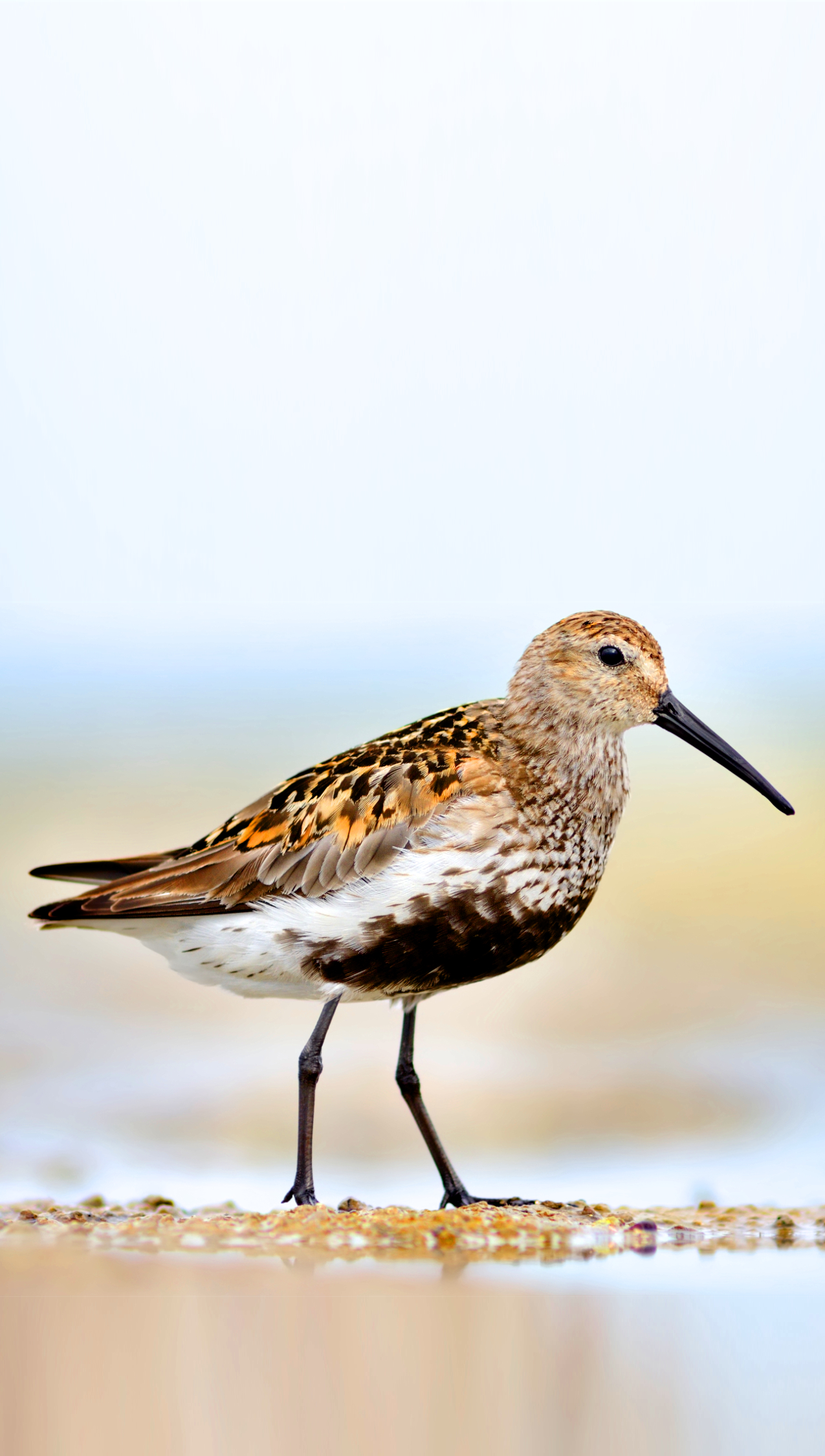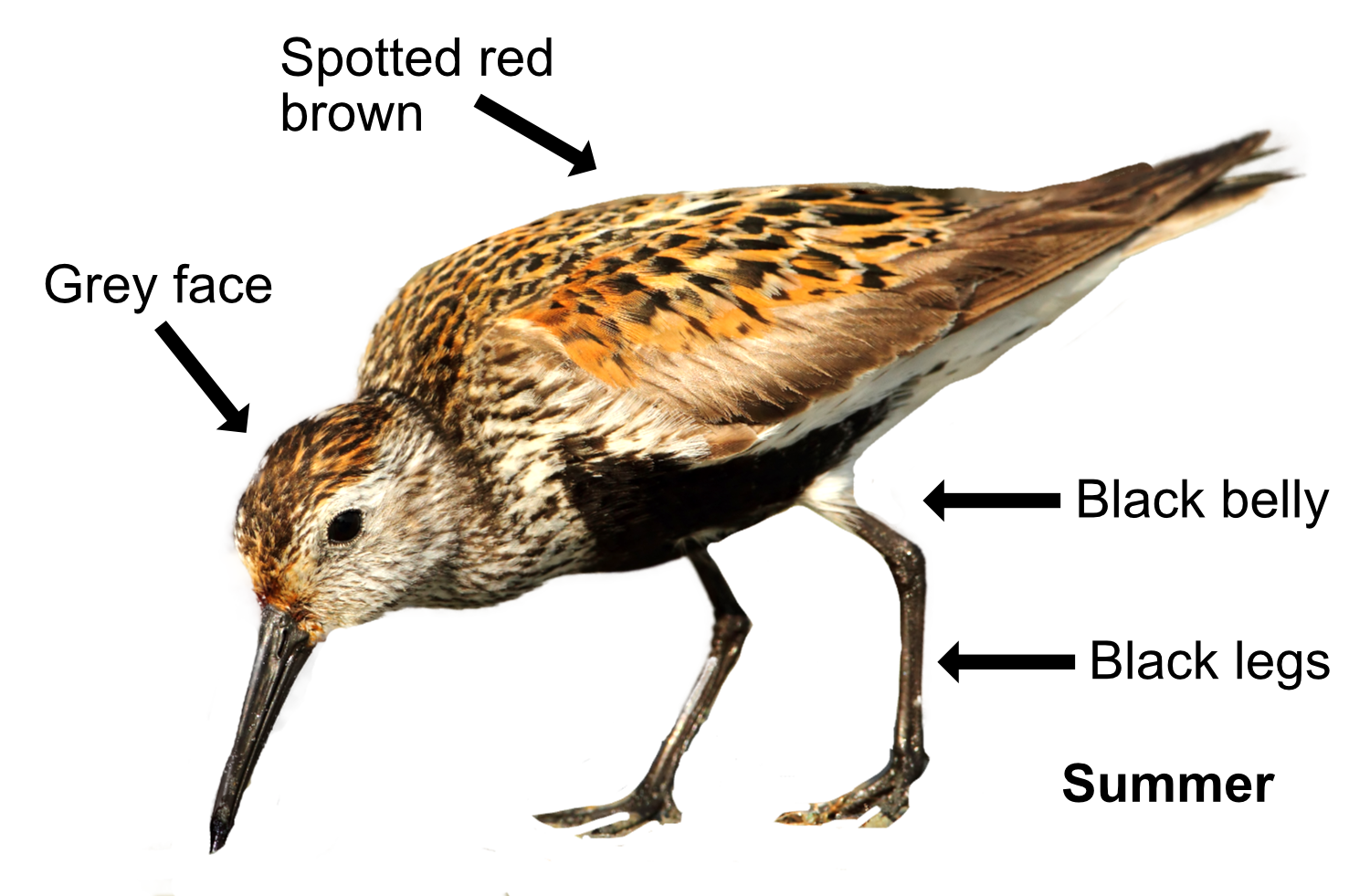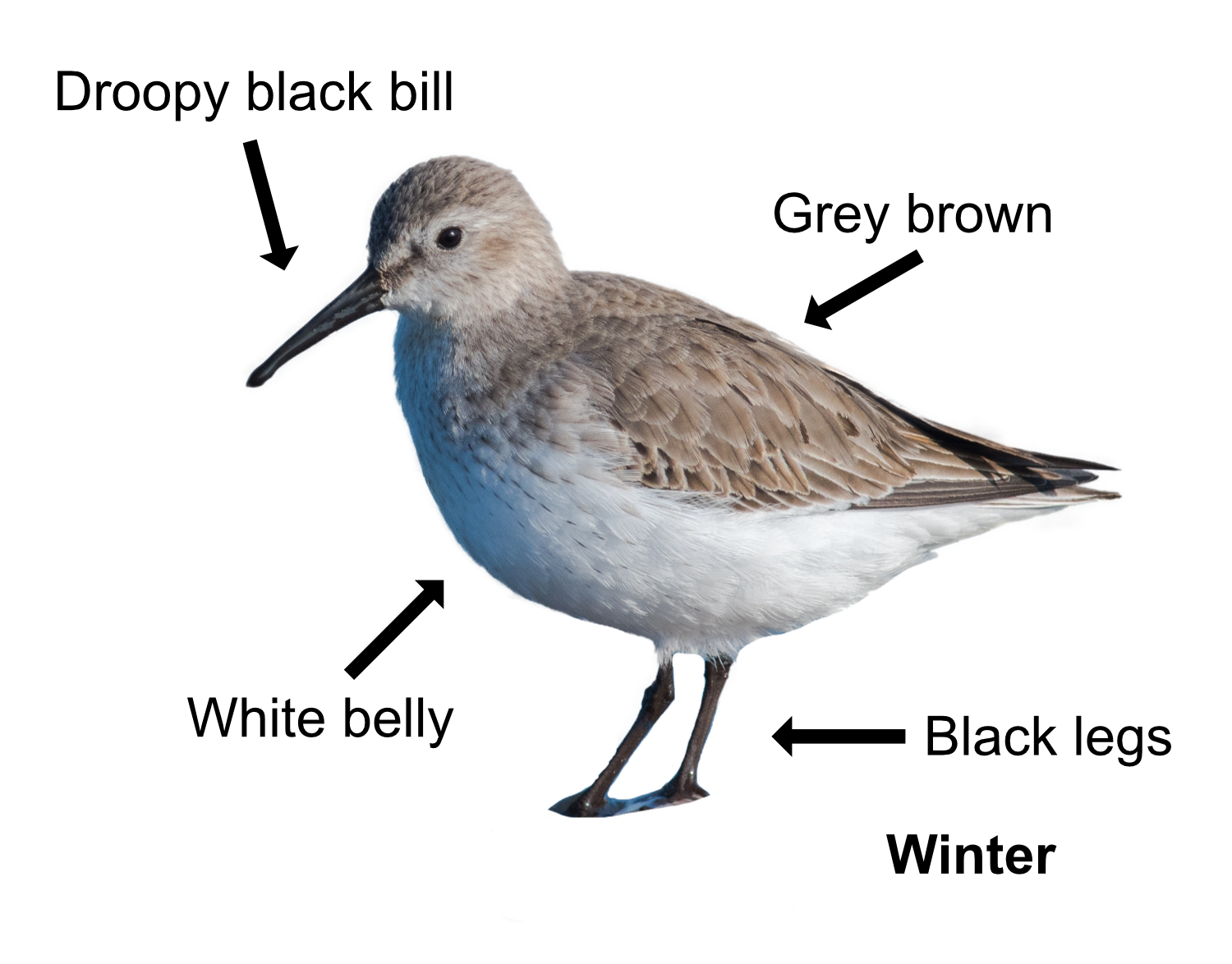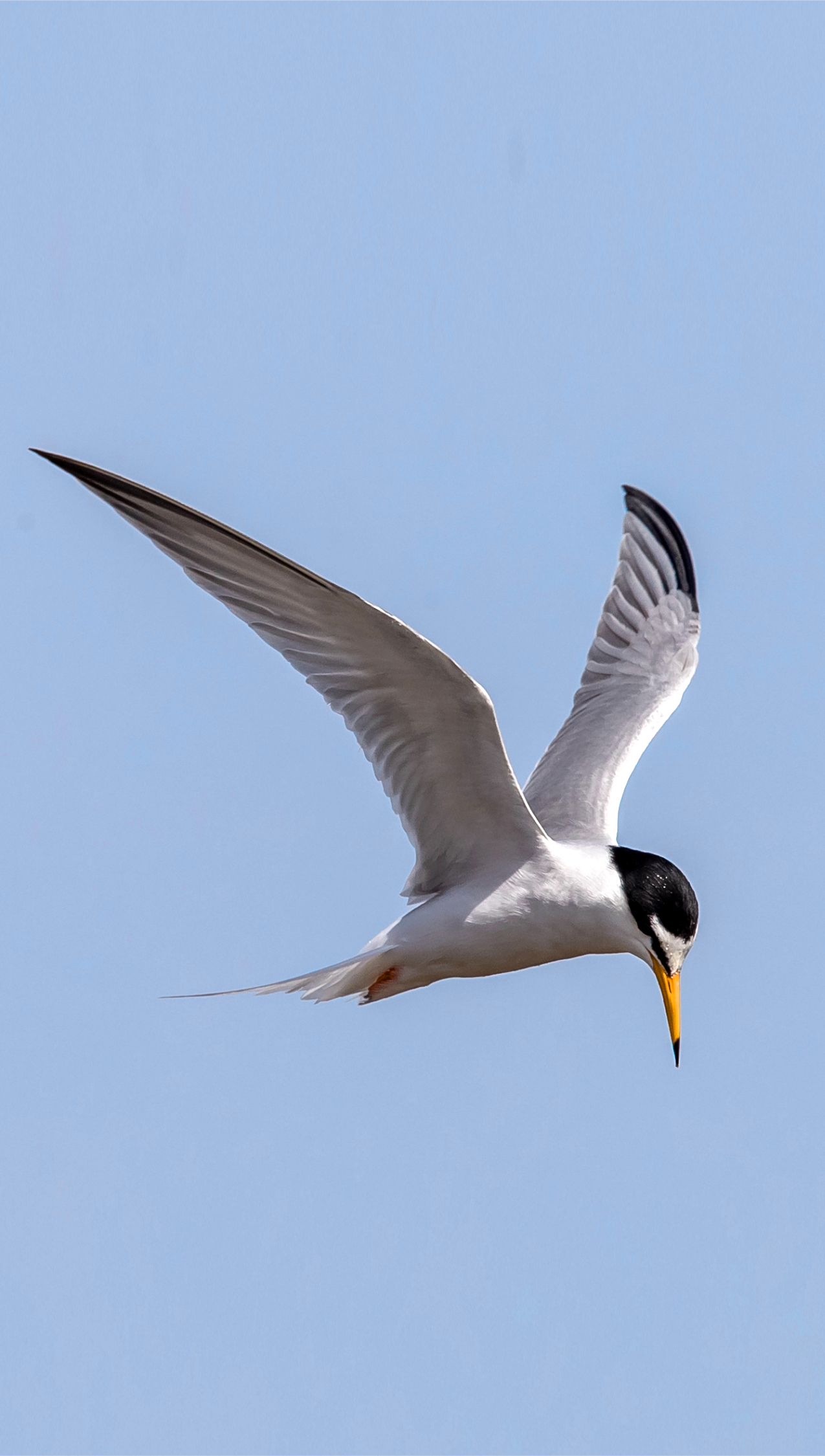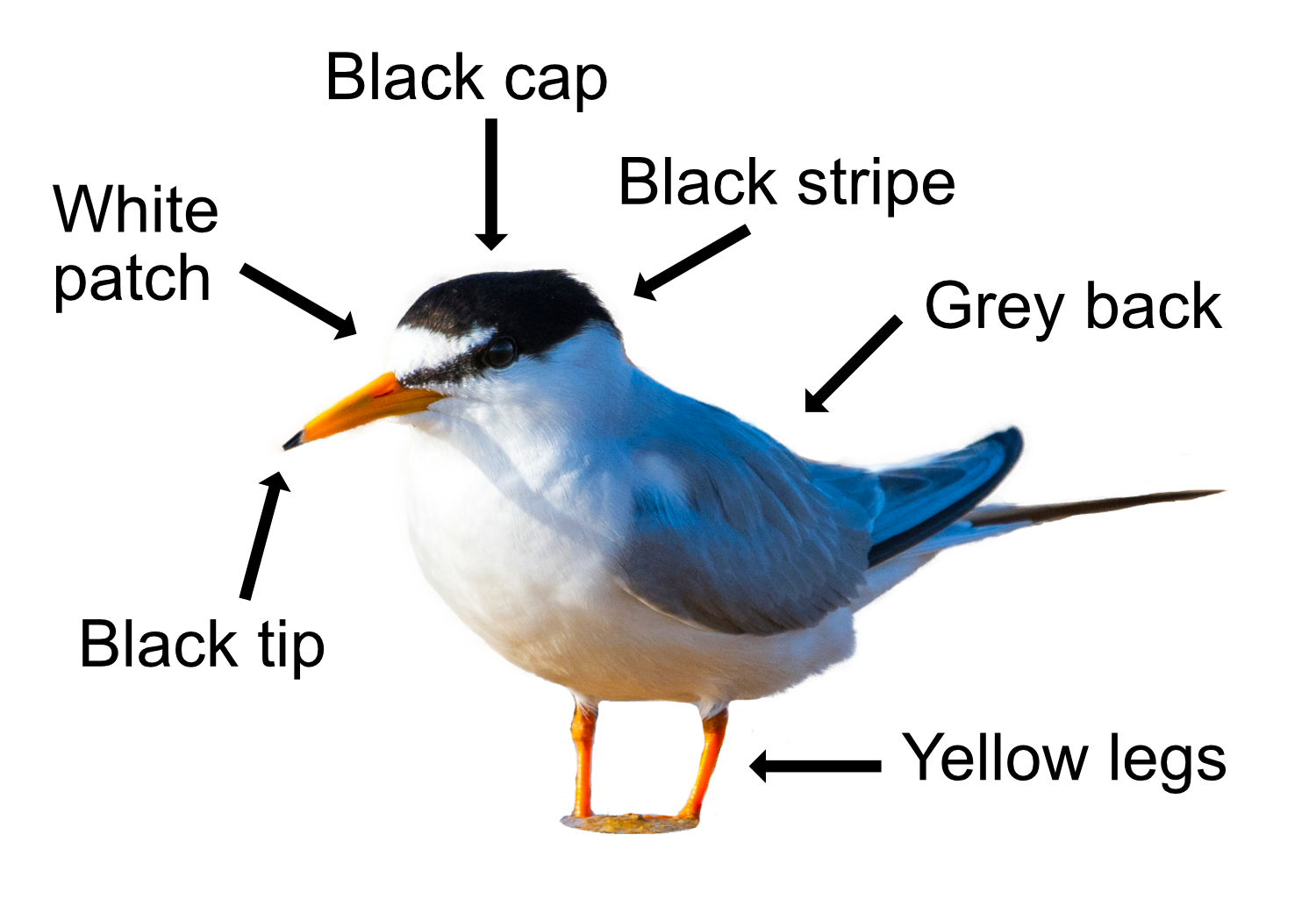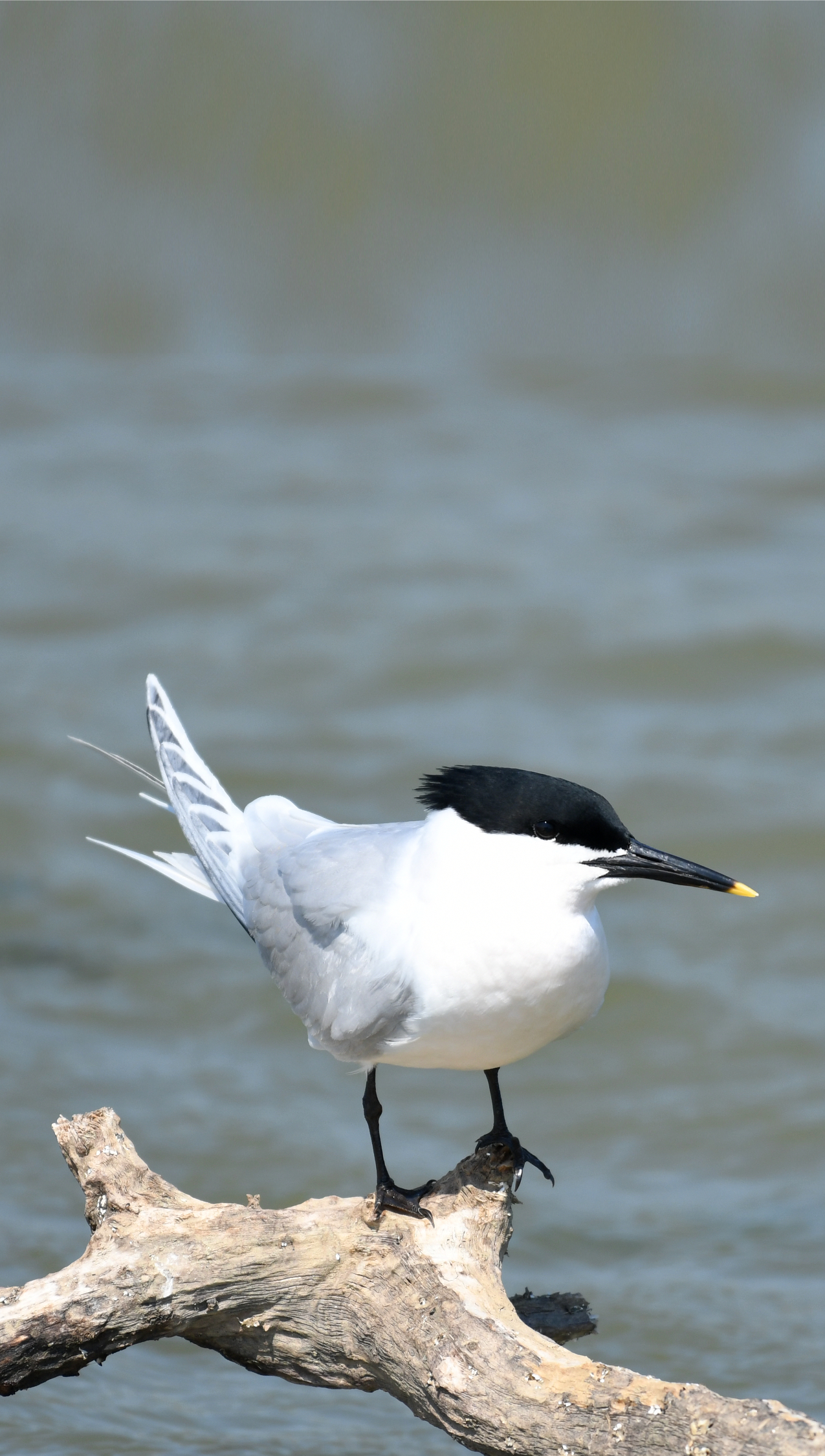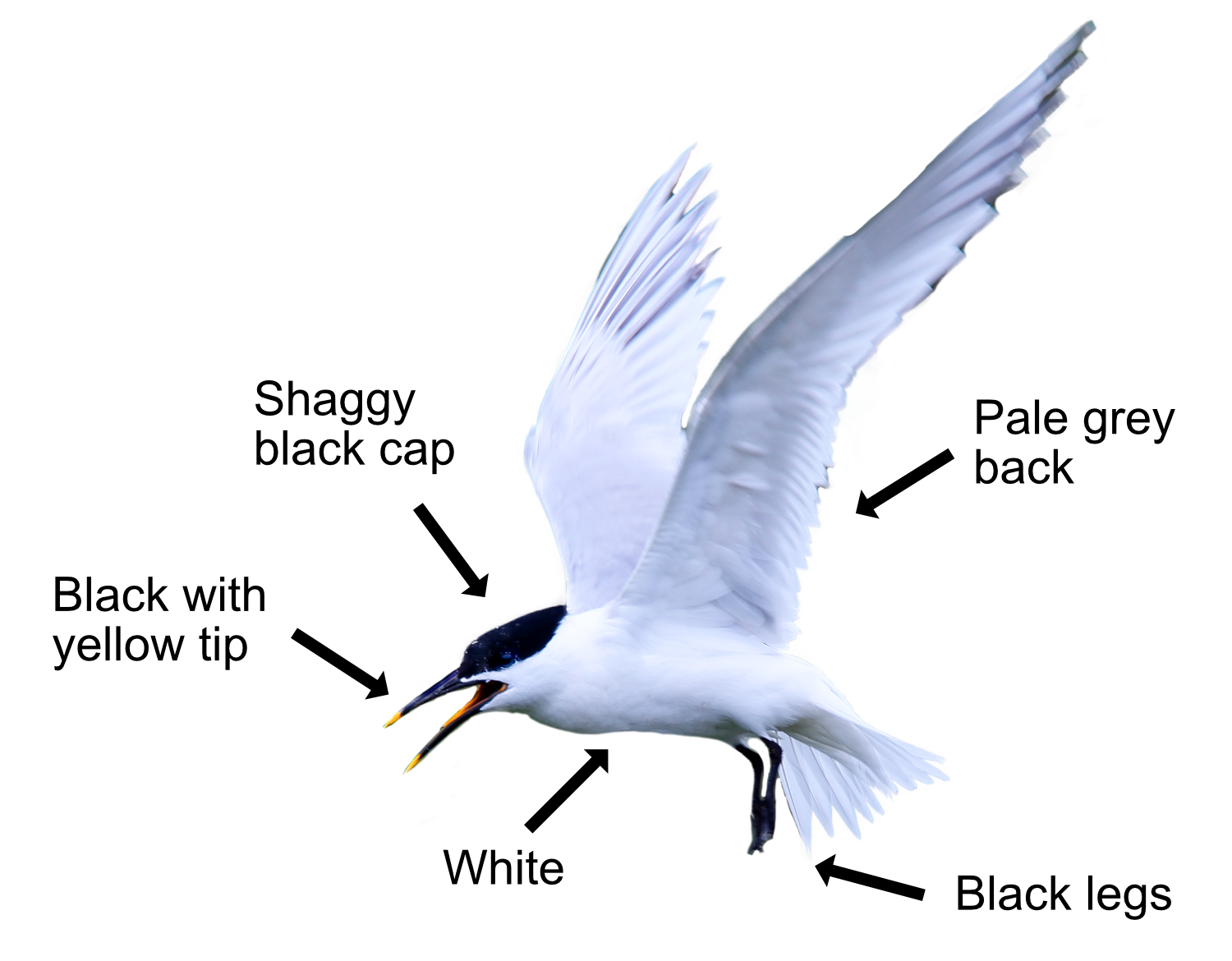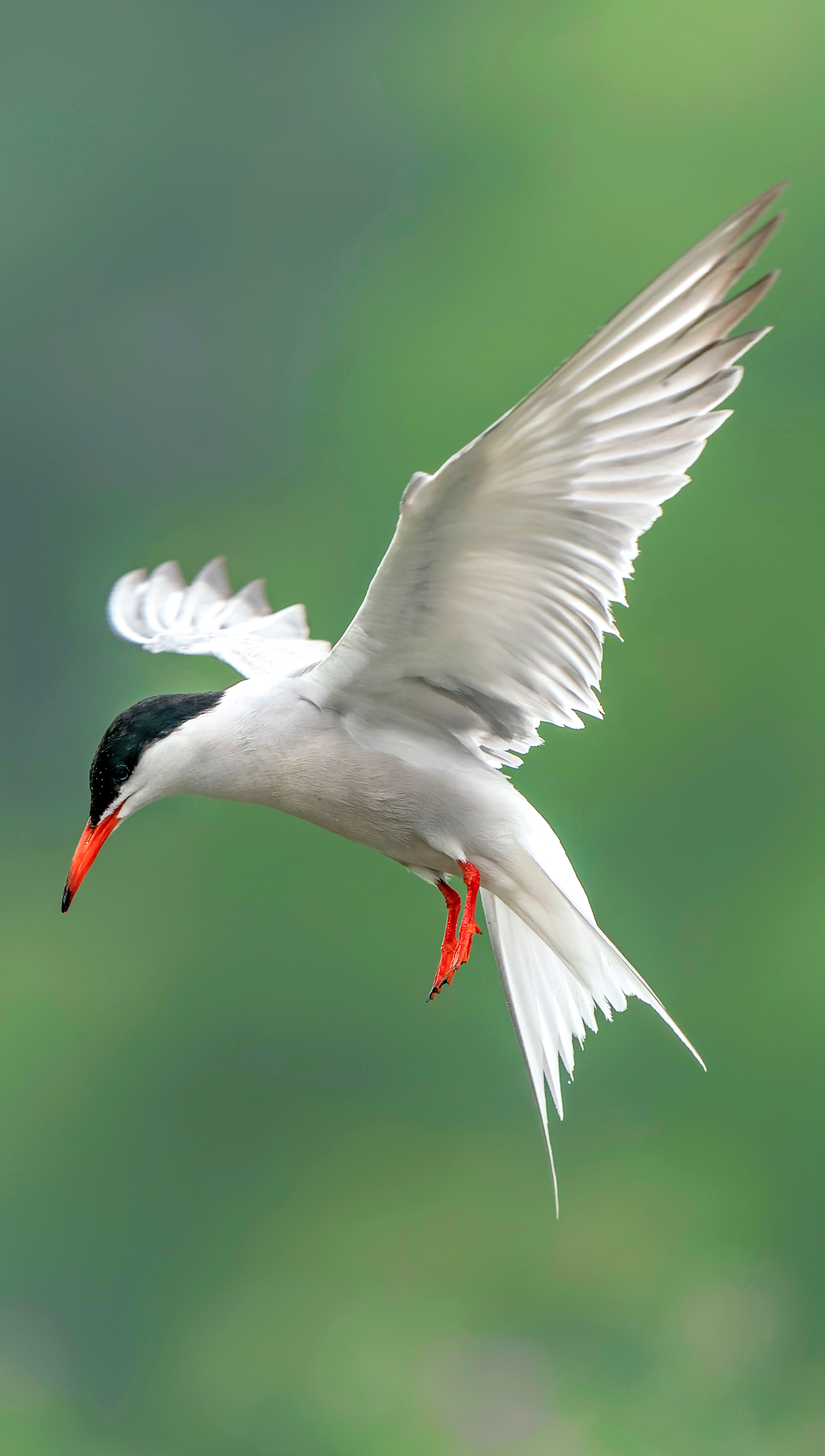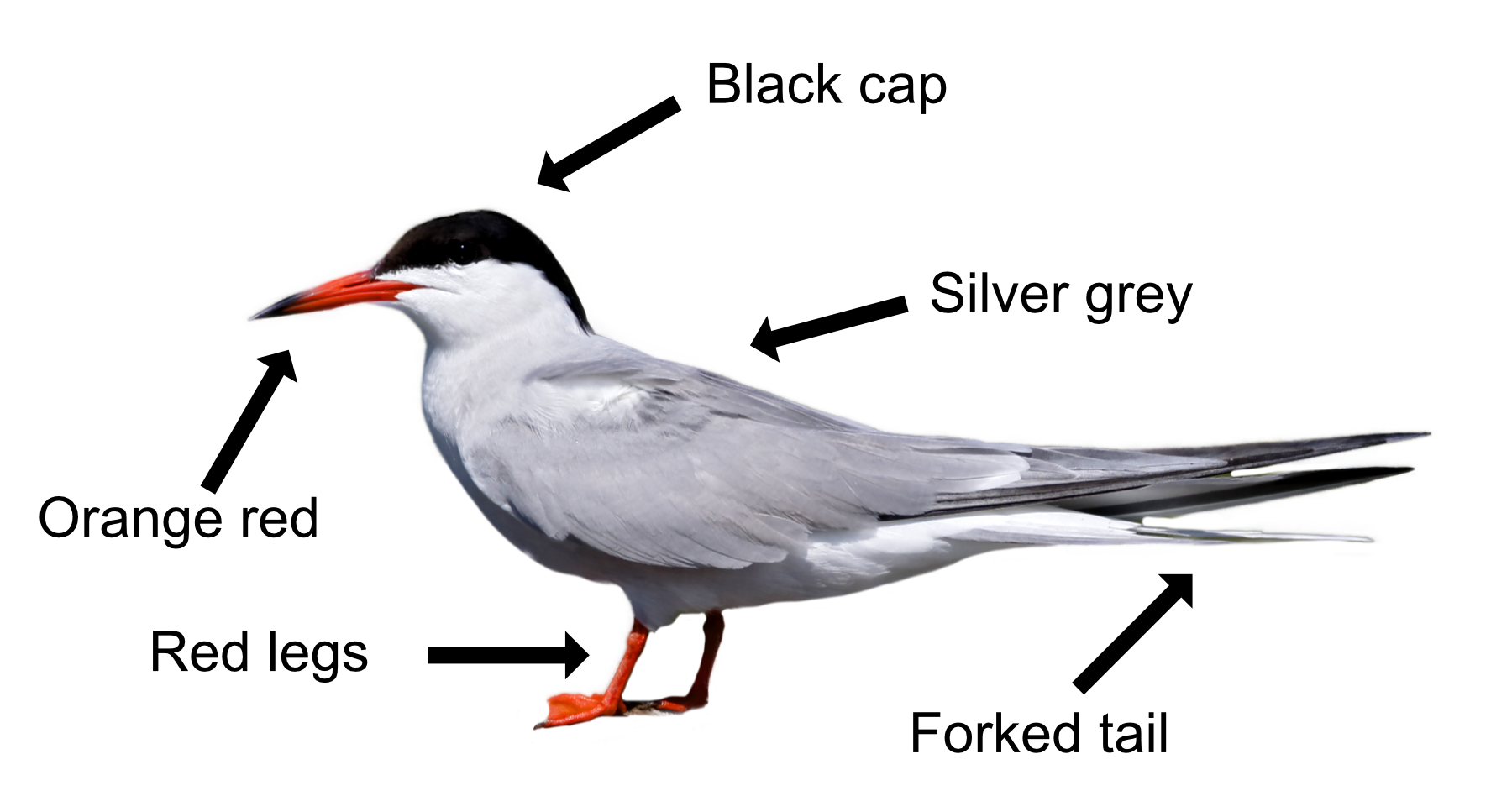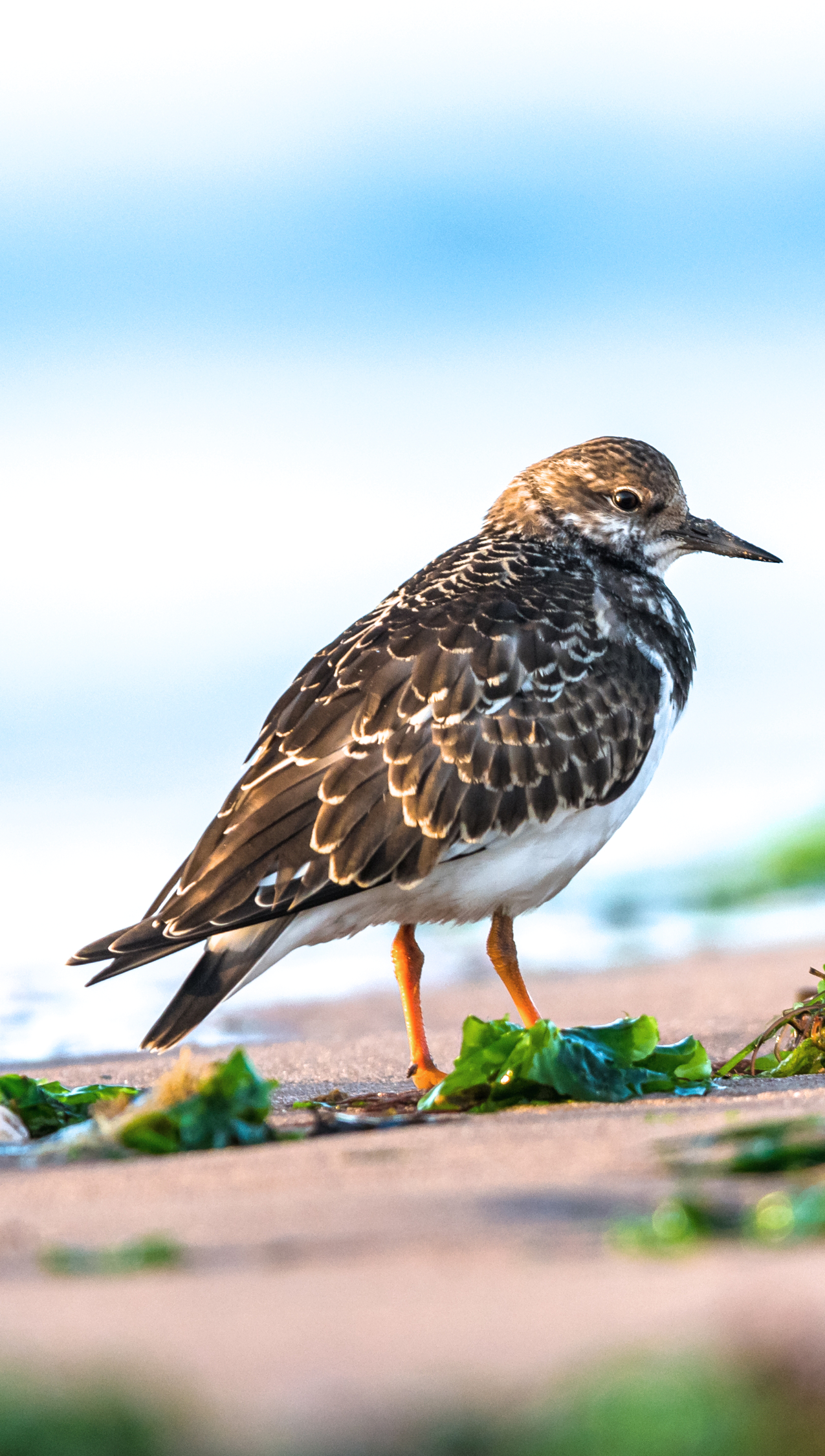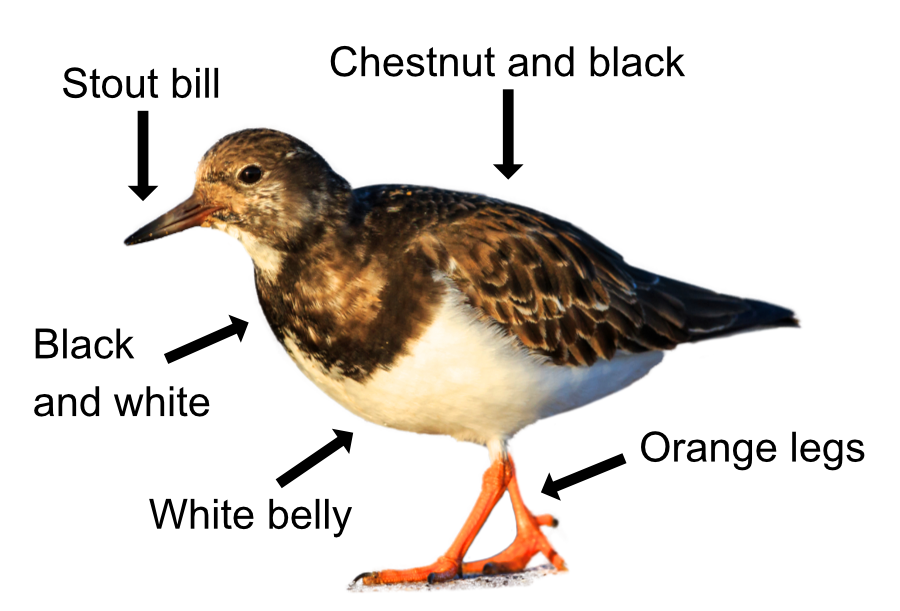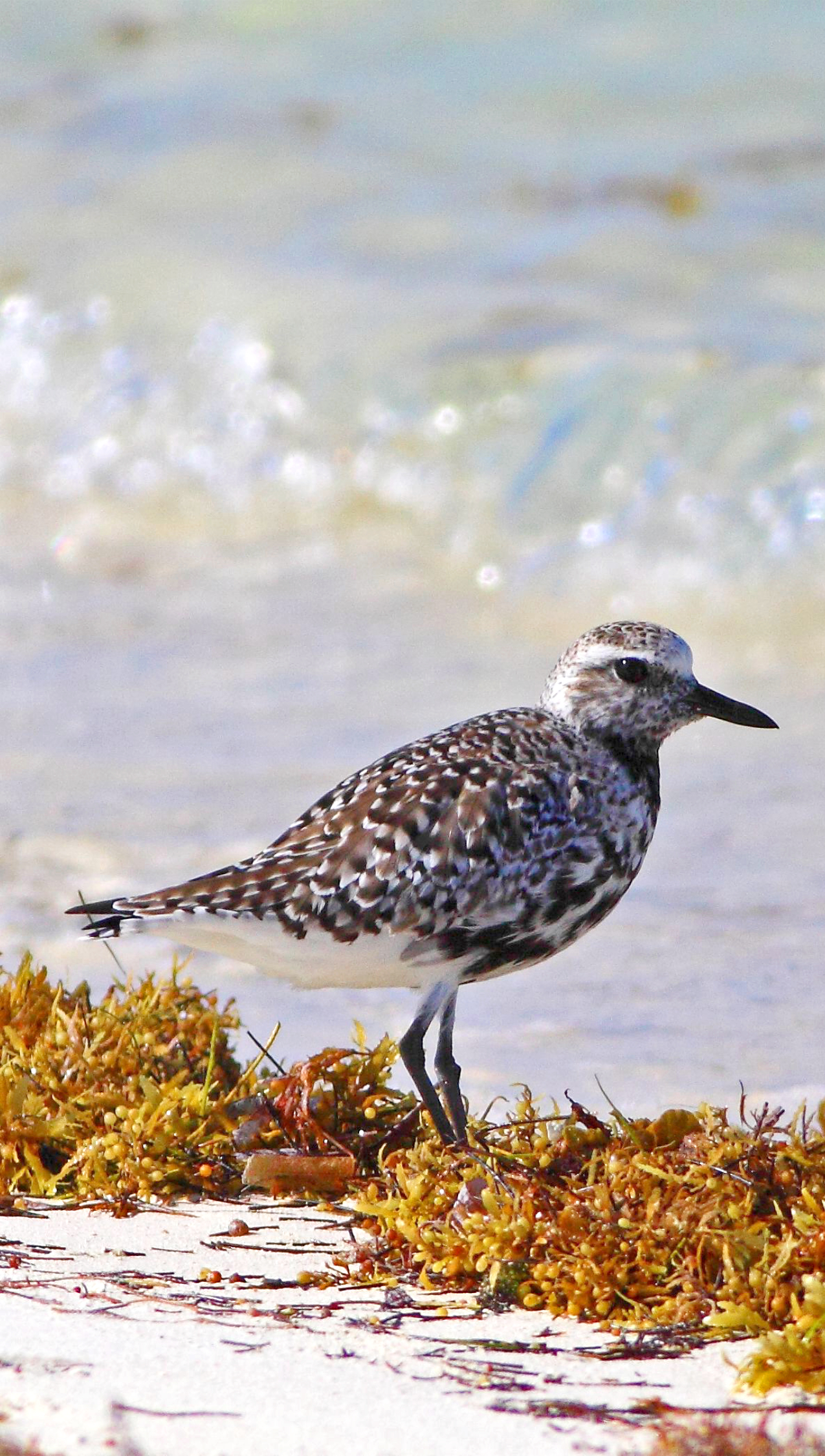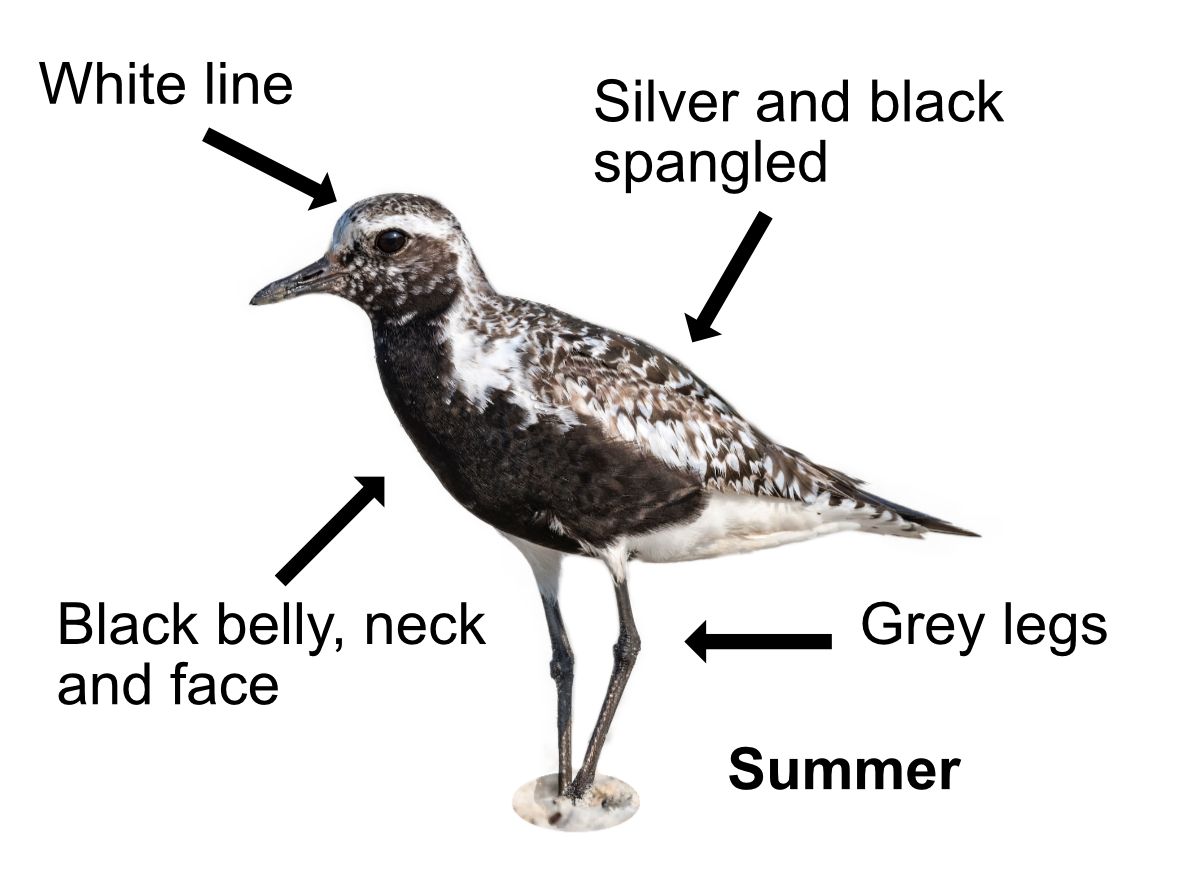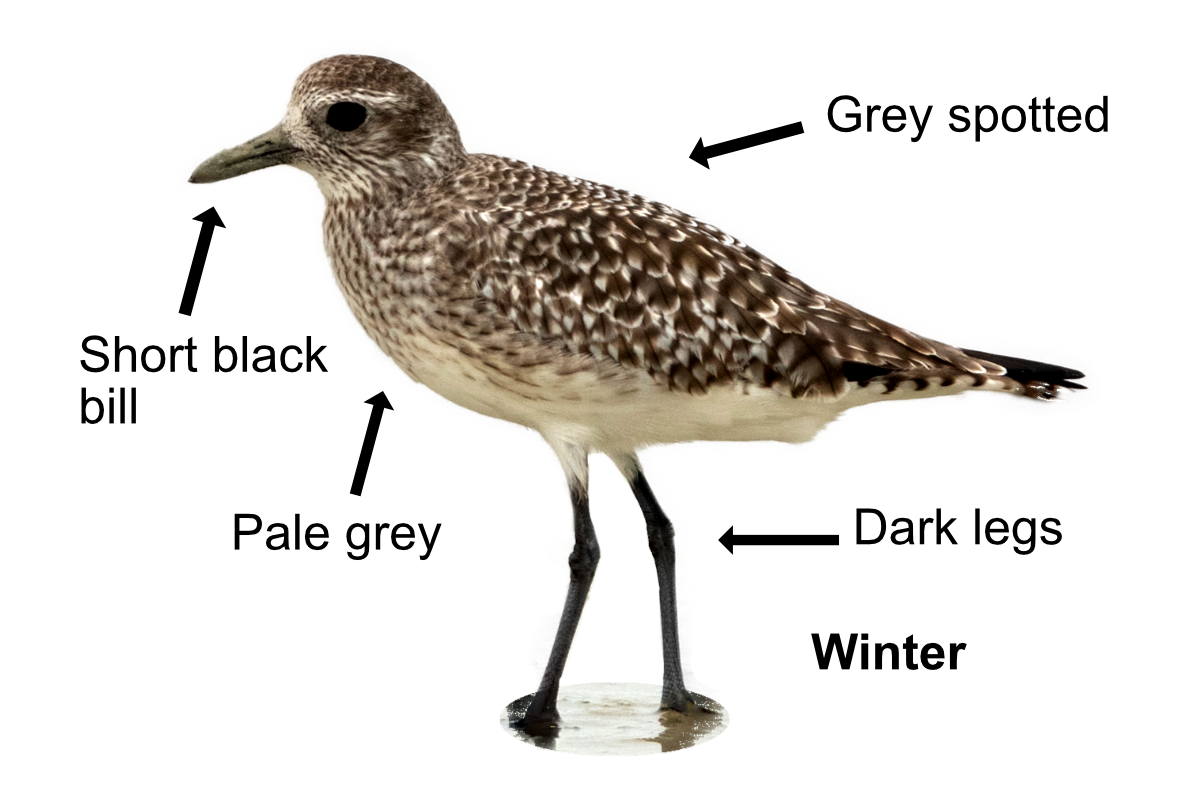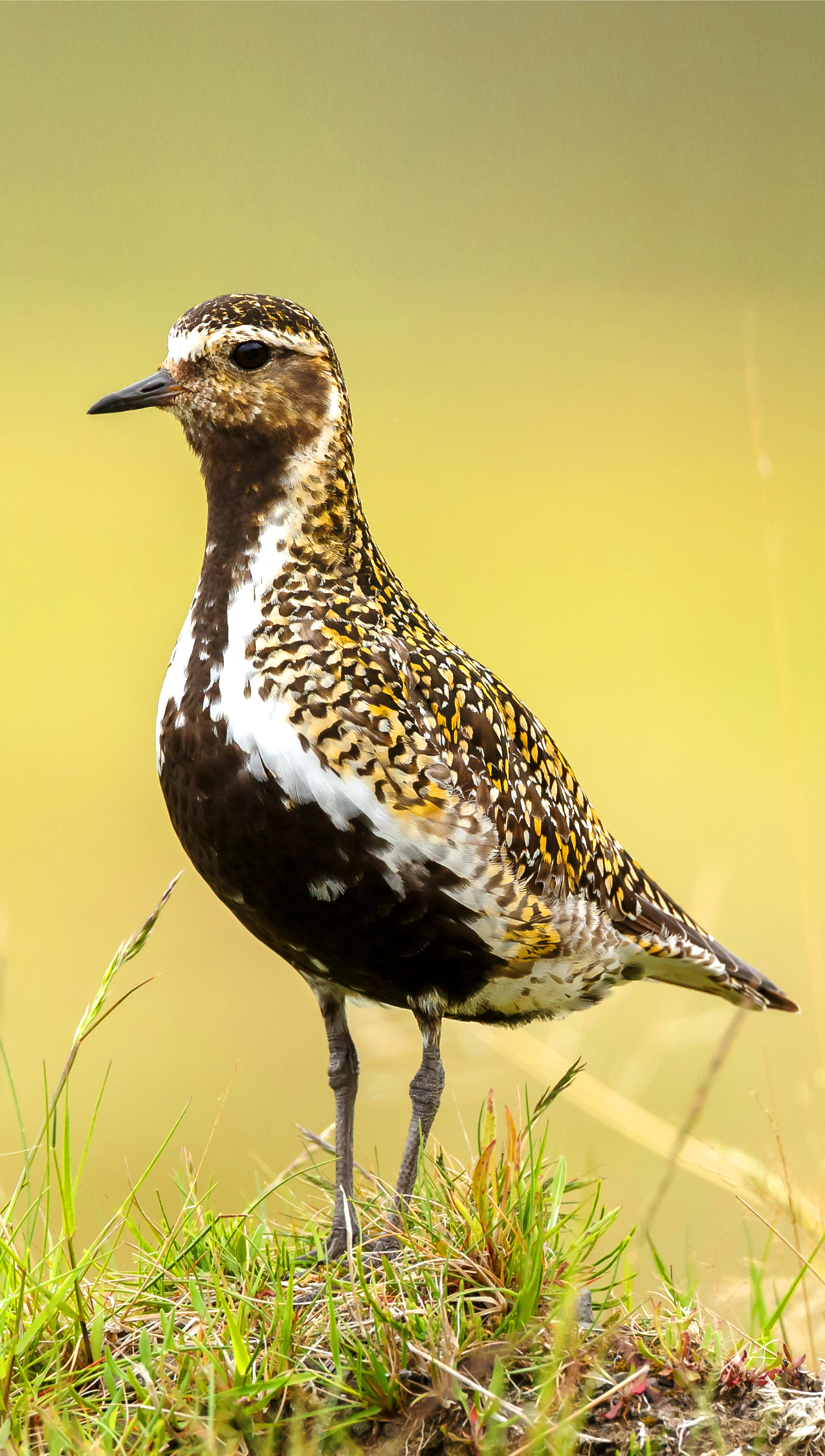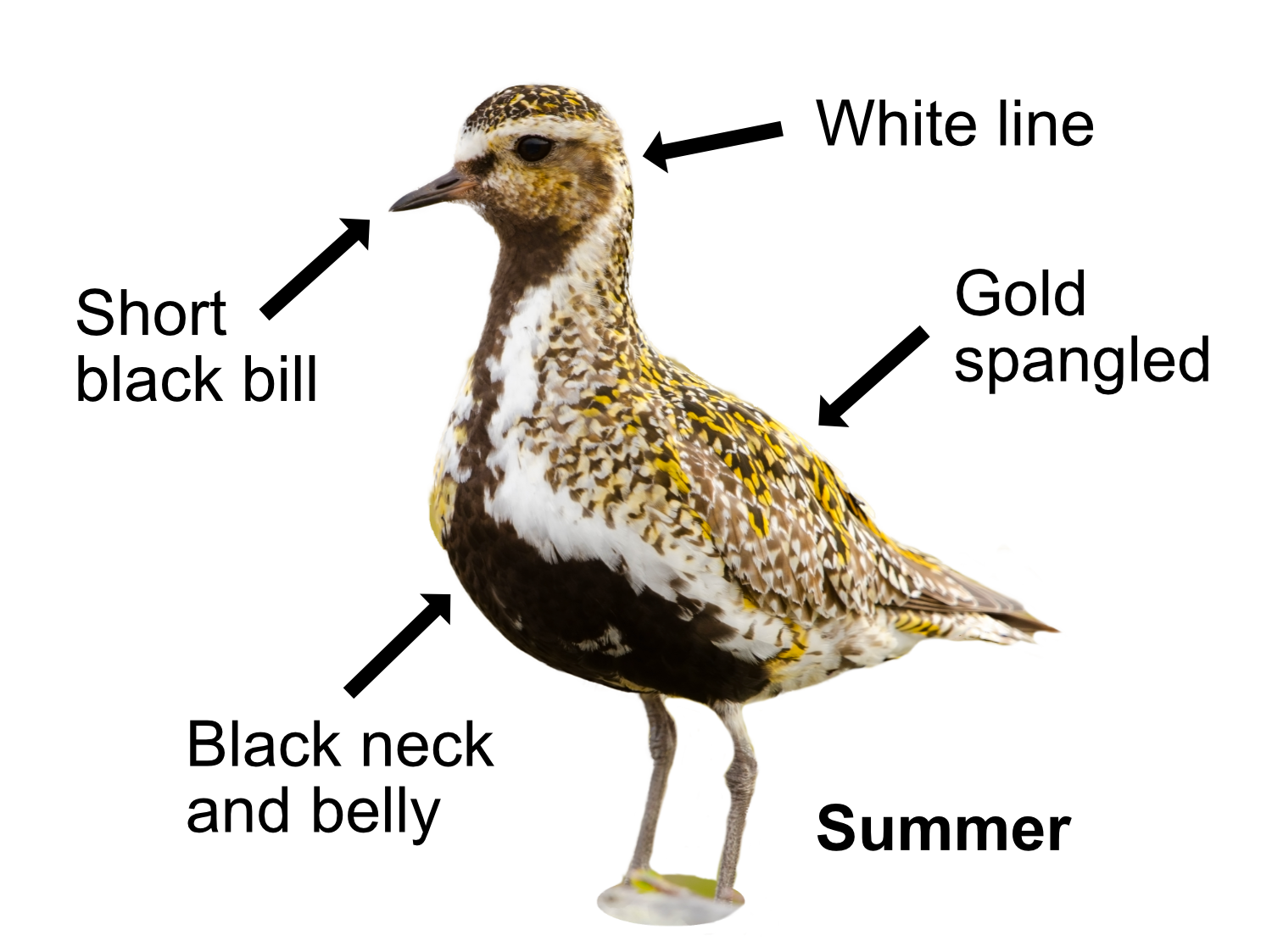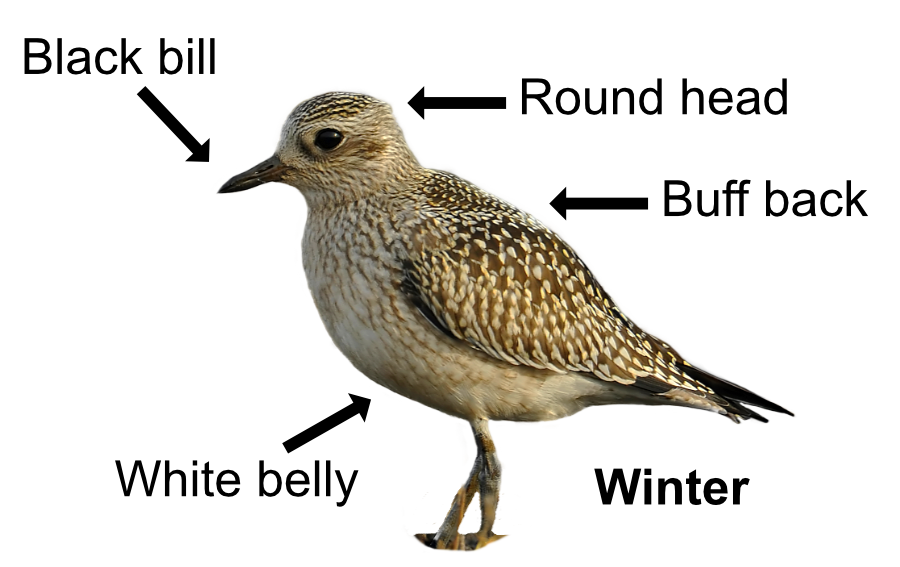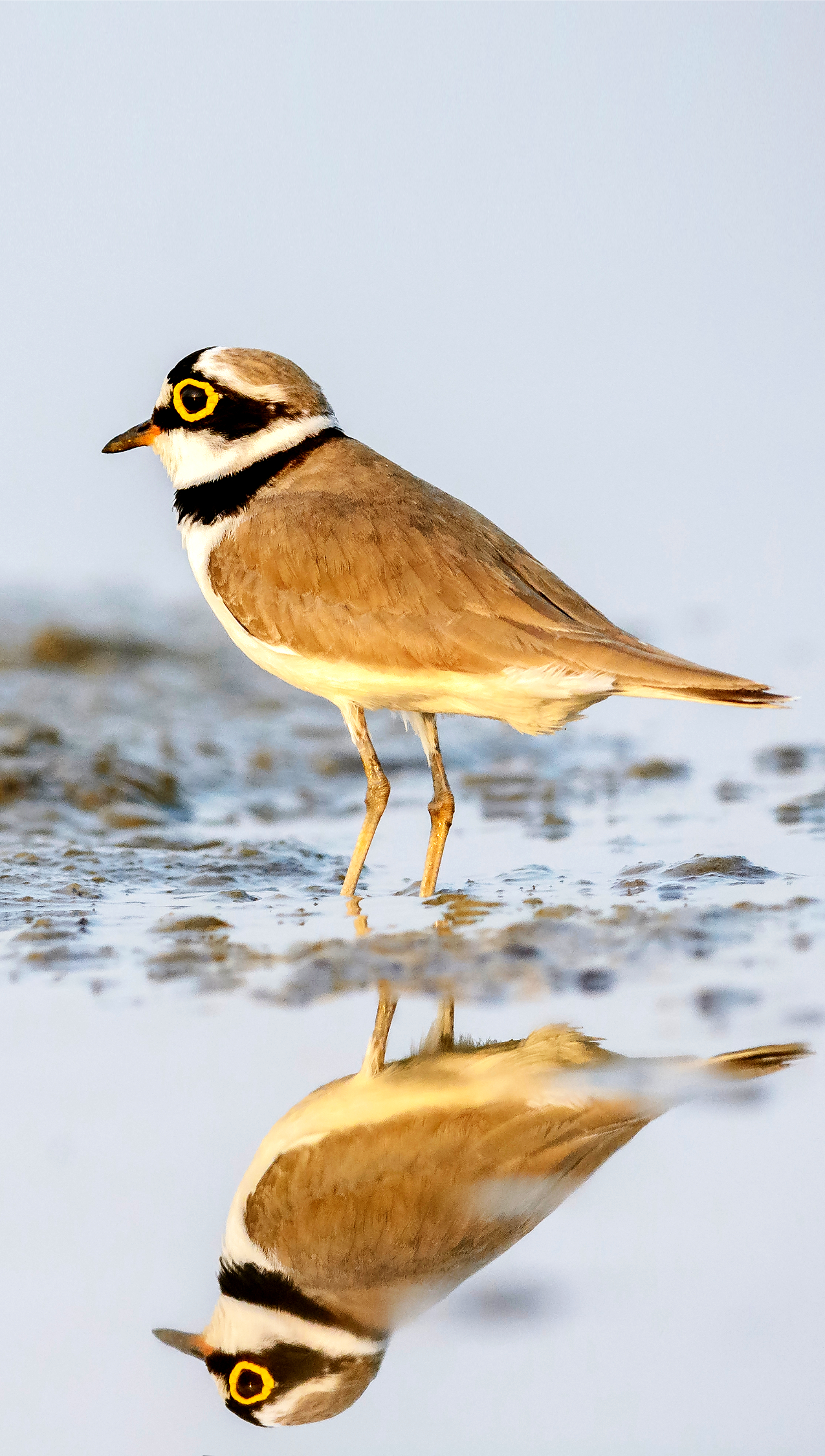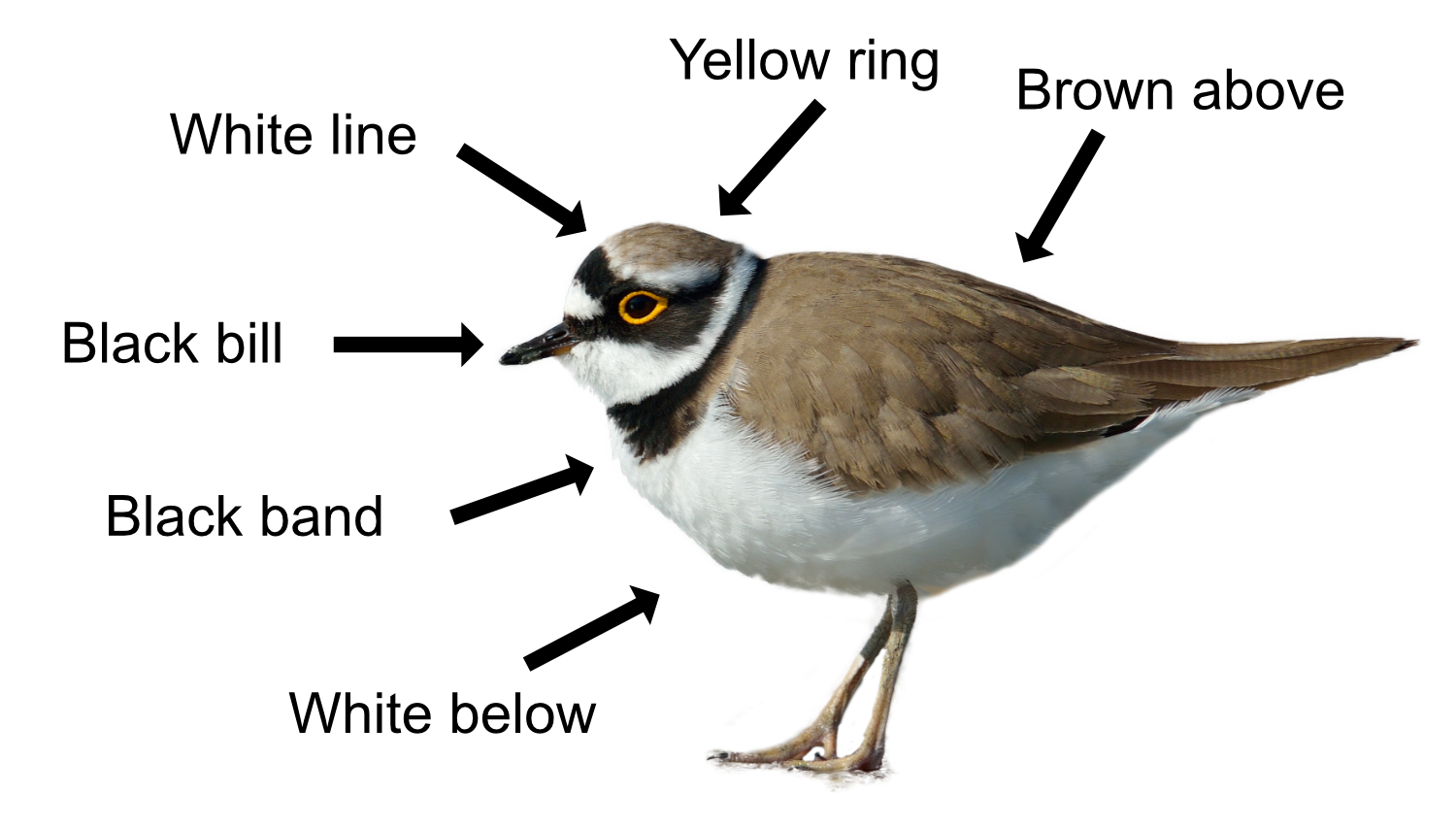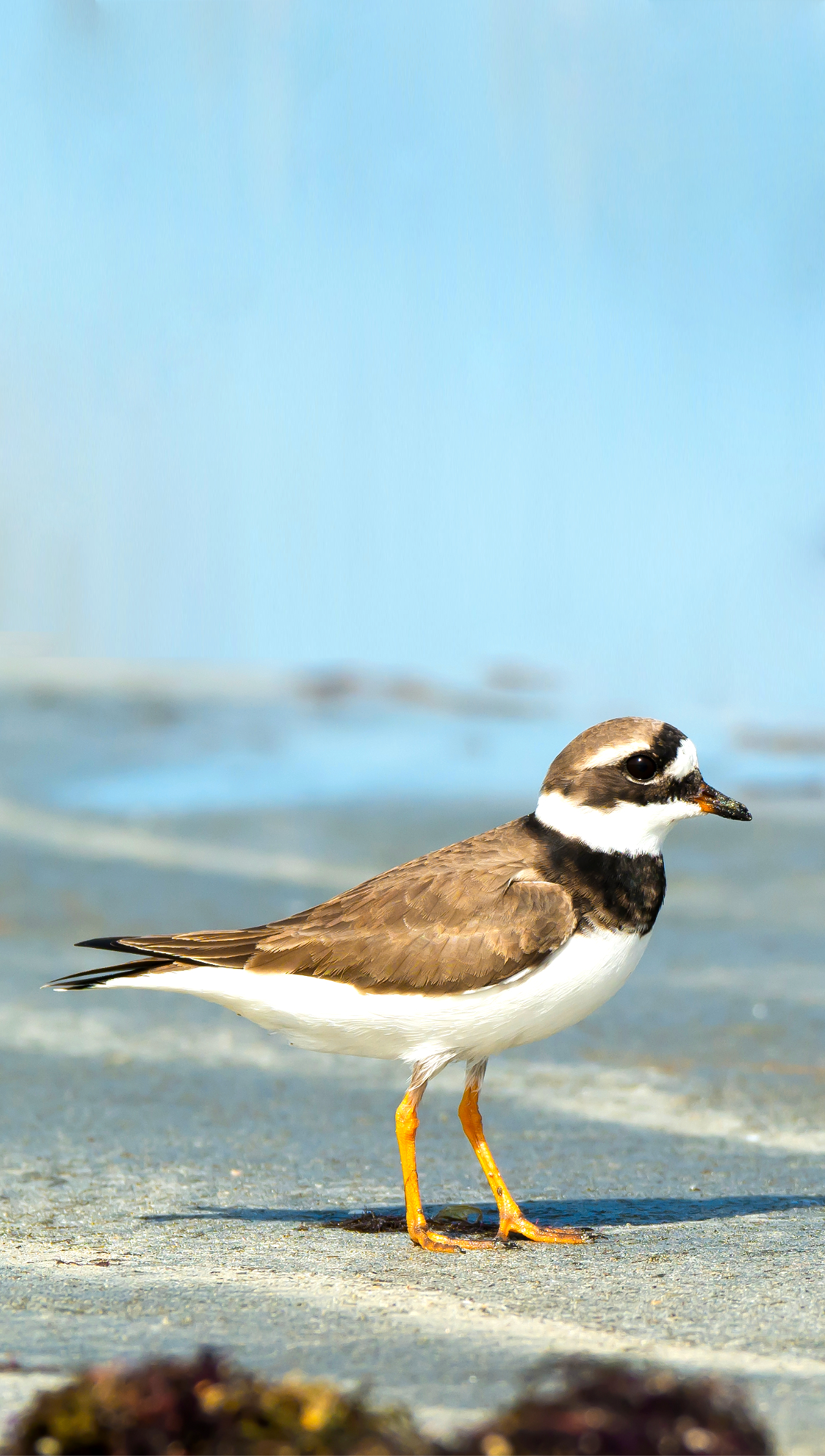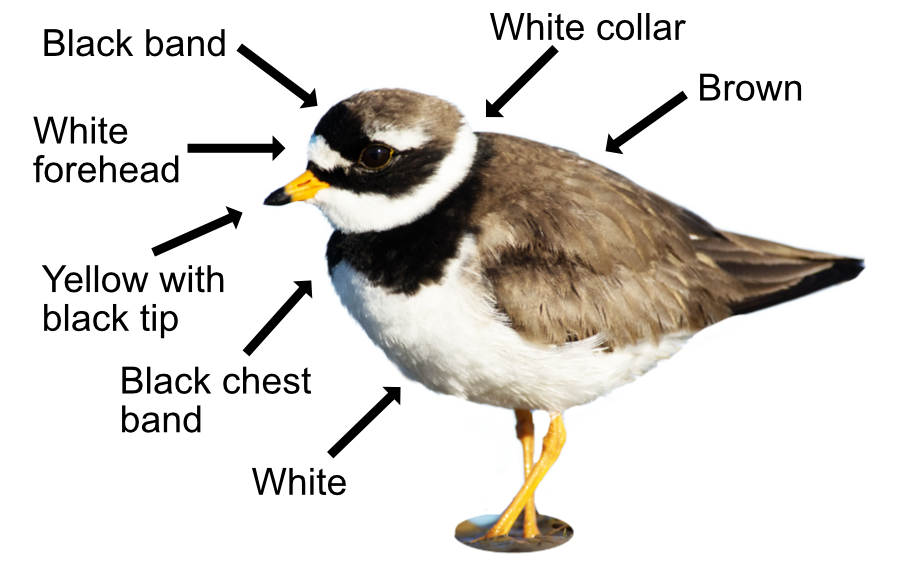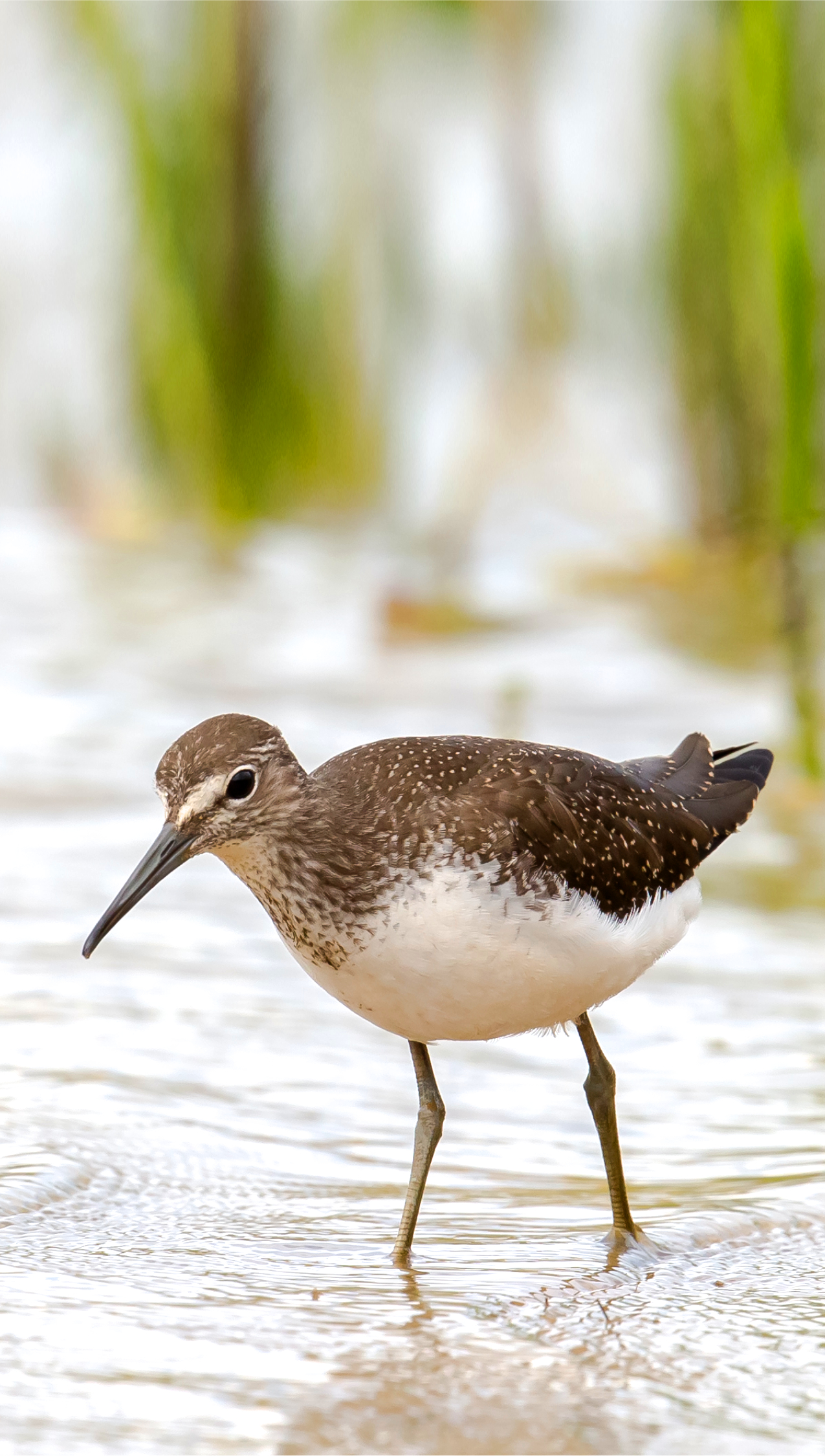
The Green Sandpiper is more common than a Common Sandpiper. It is a shy, plump wader that frequently bobs on the ground and is seen singly or in small groups. Because they are so shy, we know little about them. They are a migrant visitor, passing through, and are mainly seen in March or between July and September.
The Green Sandpiper is a smallish wader, which looks like a large House Martin in flight. It has dark green-brown, almost black, fine speckled upperparts with very contrasting pale underparts, a distinctive white rump, and a dark underwing. It has white above and in front of the eye, but not behind it. The bill is dark and medium length. Its legs are greenish, giving it the 'Green' name. In flight, there is no wing bar, only the obvious white rump as it zig-zags erratically, making a "weet-a-weet-weet" call.
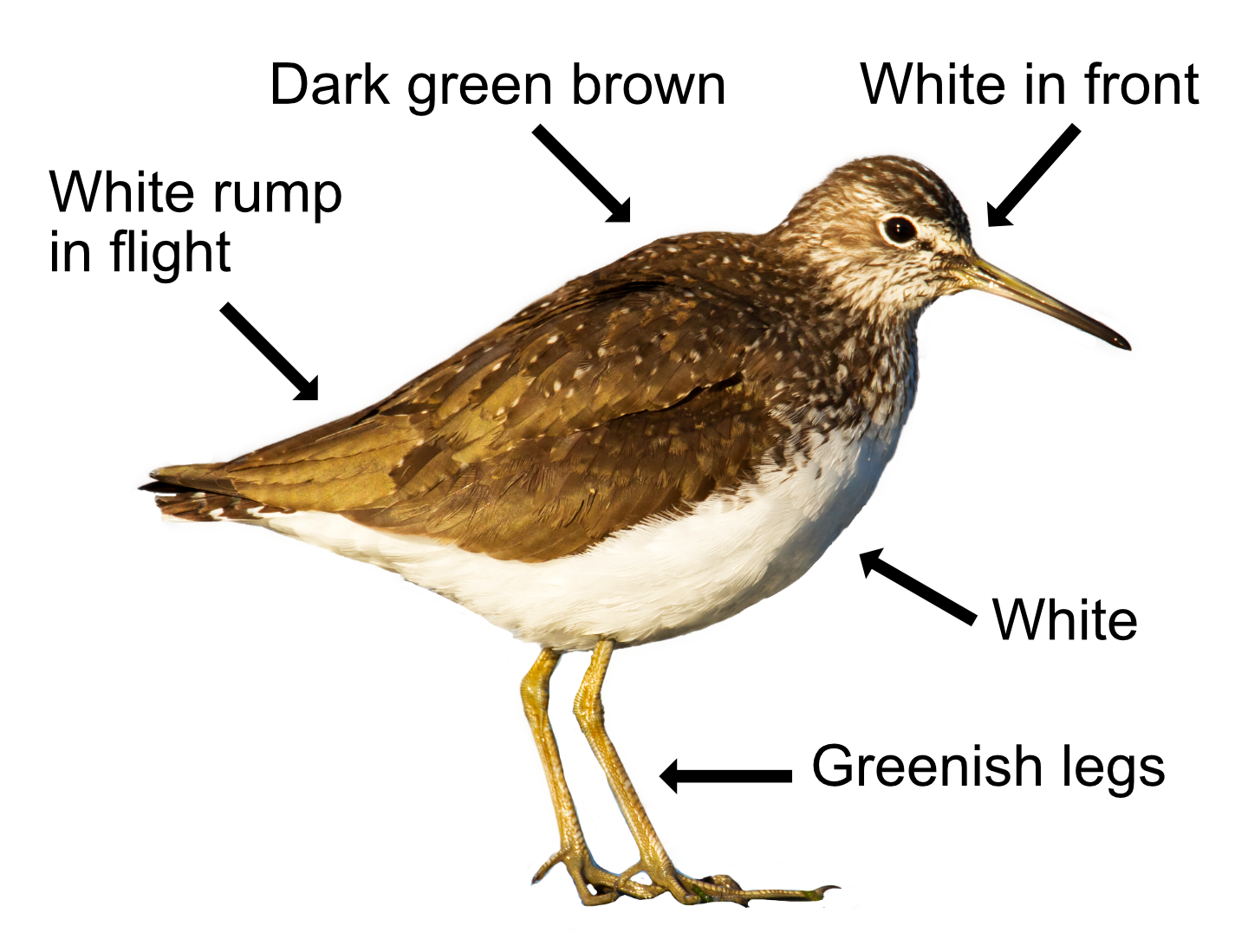
They feed on insects, shrimps and snails in shallow water where there is vegetation nearby, often bobbing along, in a typical sandpiper fashion. Their favourite places to dine are marshes, flooded gravel pits, rivers, and even sewage works!
Green Sandpipers pass though in March and arrive at their breeding grounds in Northern Europe by mid-May. Unusually for a wader, they nest in trees, using old nests of other birds in woodlands, near flowing water. Their 4 eggs hatch after 20 days with both parents sharing the incubation. Although the youngsters can feed themselves, mum and dad care for them until they can fly 28 days later. The return journey to Africa begins in June, with mum going first and dad following a little later with the kids. Not all Green Sandpipers return to Africa with between 500-1000 overwintering in Southern Britain.
The European breeding population is between 330,000 and 800,000 pairs and in the past, the Green Sandpiper has only bred in Britain on a couple of occasions. Their Latin name is 'tringa ochropus' where 'tringa' is from the Ancient Greek 'trungas' for a thrush-sized, white-rumped, tail-bobbing wading bird mentioned by Aristotle, and 'ochropus' is from 'okhros' meaning 'ochre coloured' with 'pous' for 'foot'. A thrush-sized, white rumped bobbing bird with browny-yellow feet. So... nearly right - apart from the feet.
